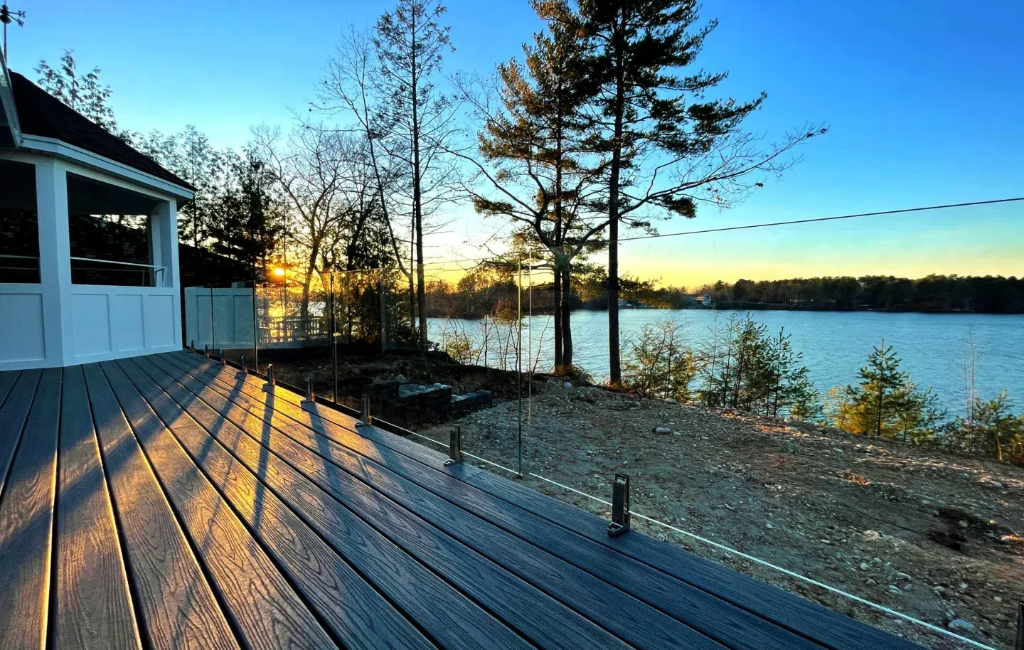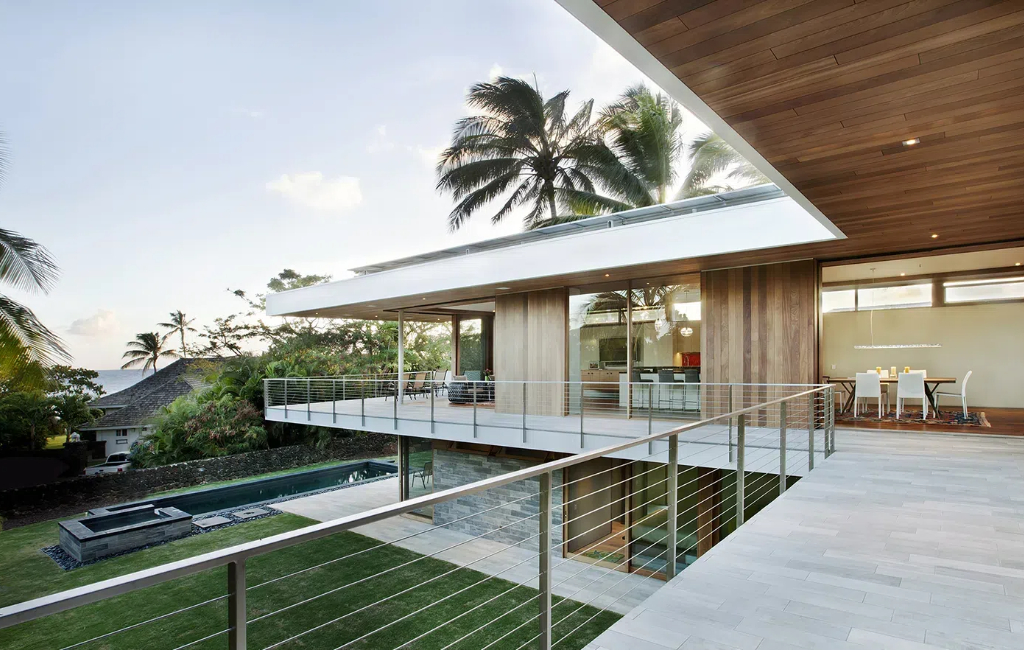Which Railing is Best for Outdoor Places? Glass Railing VS Cable Railing
Introduction
When it comes to designing and enhancing outdoor spaces, choosing the right railing is crucial. Not only does it play a significant role in the overall aesthetic appeal of the area, but it also ensures safety and functionality. The railing you select for your outdoor space will be exposed to various weather conditions and regular use, making it essential to consider key factors before making a decision.
In this discussion, we will explore the main types of railings that are commonly used for outdoor spaces: glass railing and cable railing. Each type offers unique advantages and considerations, making it essential to understand their characteristics before making a decision. By examining these three options, you will be able to make an informed choice and select the perfect railing for your outdoor space.
Glass Railing
Glass railing, also known as Frameless glass railing and balustrade glass railing, refers to the use of transparent or translucent material as the primary structural element in railing systems. These systems are typically composed of tempered or laminated glass panels, which are securely mounted to support posts or frames. The modern and sleek appearance of glass railing makes it a popular choice for both residential and commercial applications.
Glass railing, when used in outdoor spaces, presents a range of distinct advantages and disadvantages. Here's a detailed breakdown of both aspects:
Advantages
1.Open Views: The primary advantage of glass railing lies in its transparency, which maximizes visibility and creates a sense of spaciousness and brightness in outdoor areas.
2.Aesthetic Appeal: Glass railing boasts a sleek, modern design that enhances the overall aesthetics of outdoor spaces. Its transparency allows it to blend seamlessly with the surroundings, fostering a harmonious and natural ambiance.
3.Weather Resistance: High-quality glass railing, often made from tempered or laminated glass, is resistant to corrosion and withstands exposure to wind, sun, and rain, ensuring long-term durability in outdoor environments.
4.Easy Cleaning and Maintenance: The smooth and non-porous surface of glass railing is resistant to dust accumulation and staining, making it easy to clean and maintain.
5.Safety: Glass railing is designed with considerations for load-bearing capacity and impact resistance to prevent accidents. Some designs incorporate safety handrails or reinforcement for added security.
Disadvantages
1.Higher Cost: Compared to traditional wooden or metal railings, glass railing typically incurs higher manufacturing and installation costs due to the expense of glass materials and the technical expertise required for installation.
2.Installation Requirements: Glass railing demands precise installation techniques and adherence to strict specifications to ensure safety and prevent issues like glass breakage, loosening, or detachment.
3.Privacy Concerns: Due to its transparency, glass railing offers limited privacy, which may not be suitable for settings where privacy is a concern.
4.Thermal Stress Issues: Prolonged exposure to direct sunlight can cause thermal stress in glass railing, potentially leading to cracking or deformation if the material or installation method is not appropriate. Careful selection of materials and installation methods is crucial to mitigate this risk.
Suitability for Outdoor Spaces
Glass railing is an ideal choice for outdoor spaces, particularly in locations with scenic views or where maximizing natural light is desired. Its transparency allows for an uninterrupted connection to the outdoors, creating a sense of openness and spaciousness. Additionally, the high durability and weather resistance of tempered and laminated glass panels make glass railing a practical and reliable choice for outdoor applications.
In outdoor settings, glass railing can be used to define boundaries around decks, patios, balconies, and pool areas. It can also be incorporated into staircases and walkways, providing a modern and stylish railing solution that enhances the overall aesthetic of the space. When considering glass railing for outdoor spaces, it is important to consult with a professional to ensure proper installation and compliance with local building codes and regulations.

Cable Railing
Cable railing, also known as wire rope railing, has become a popular choice for modern outdoor spaces due to its minimalist and sleek design.
Cable railing has a unique set of advantages and disadvantages when used in outdoor spaces. Here is a detailed analysis of both aspects:
Advantages
1.Open Views: Cable railing, composed of slender cables, offers unobstructed views, making outdoor spaces appear more spacious and airy compared to traditional railings.
2.Design Flexibility: Cable railing offers great design versatility, allowing for customization to suit various spatial needs and aesthetic preferences. Whether straight lines, curves, or intricate shapes, cable railing can accommodate them all.
3.Modern Aesthetic: With its minimalist, streamlined design, cable railing adds a modern and technological touch to outdoor spaces, fitting seamlessly into contemporary architectural styles.
4.Durability: High-quality cable railing is often made from corrosion-resistant materials like stainless steel or galvanized steel, making it durable and able to withstand wind pressures in outdoor environments.
5.Easy Maintenance: Cleaning and maintaining cable railing is relatively straightforward, requiring only periodic wiping and checking of cable tension and fixation.
6.Safety: When installed with appropriate tension and spacing, cable railing provides sufficient support to prevent people or objects from falling over the edge. Additionally, it can be combined with glass or other transparent materials to further enhance safety.
Disadvantages
1.Strict Installation Requirements: Installing cable railing necessitates high technical standards and precision control. Improper installation can lead to loose cables, detachment, or compromised aesthetics. Therefore, it is crucial to engage professional installation teams and adhere strictly to installation specifications.
2.Visual Obstruction: While cable railing's unobstructed views are an advantage, in some situations, the cables themselves can become visual obstructions. Particularly in low-light conditions or at night, cables may cause reflections or shadows, affecting visual clarity and safety.
3.Environmental Adaptability: Although cable railing is durable, it may be affected in extreme weather conditions such as strong winds, heavy rain, or hailstorms. Therefore, when selecting cable railing, it is important to consider local climate conditions and environmental factors.
Suitability for Outdoor Spaces
Cable railing is particularly suitable for outdoor spaces where an open feel is preferred. Here are some examples of areas where cable railing is commonly used:
Decks: Cable railing is an excellent choice for decks, as it provides a sleek and modern look while allowing for an unobstructed view of the surrounding landscape.
Balconies: Balconies can benefit from the minimalist design of cable railing, which enhances the open feel of the space and allows for better appreciation of the view.
Staircases: Cable railing can be used on staircases to create a contemporary and stylish look. It provides a secure barrier while allowing natural light to flow through, making the space feel more open and inviting.

In conclusion, the exploration of glass railing and cable railing, has highlighted their unique strengths and considerations for various outdoor spaces. Glass railing offers an unobstructed view and a sleek, modern aesthetic, making it ideal for showcasing stunning vistas. However, it requires regular cleaning and may not be as durable in extreme weather conditions. Cable railing, on the other hand, provides a minimalist look with a high degree of visibility, but it necessitates careful installation to ensure safety and may not be suitable for all applications due to visibility concerns. Ultimately, the importance of carefully evaluating the specific requirements and preferences for the outdoor space cannot be overstated. Consulting with a professional who can assess factors such as safety regulations, environmental conditions, and aesthetic goals is crucial to determining the best railing option for a particular project or application.
